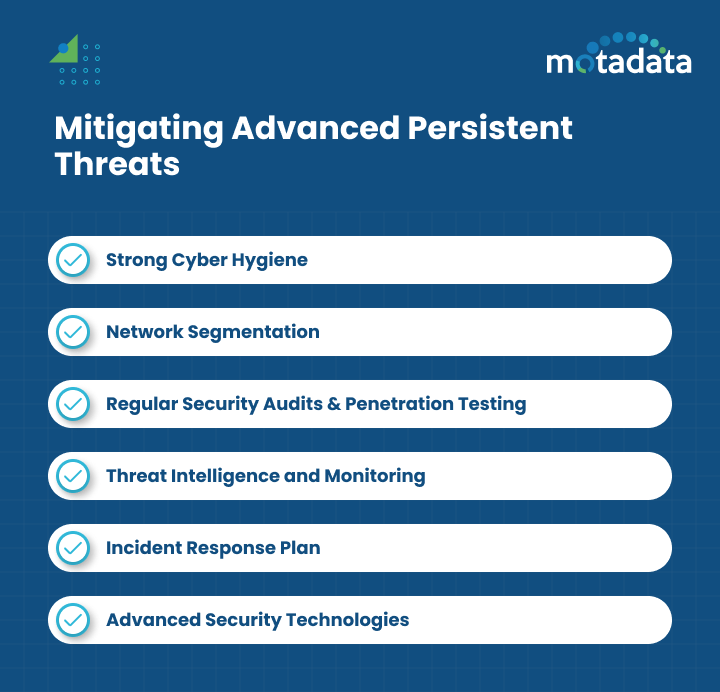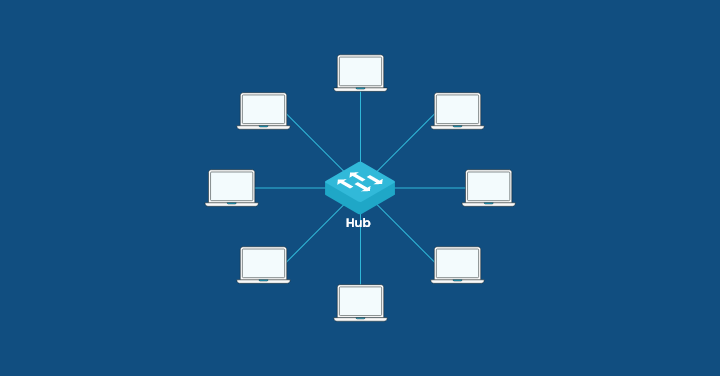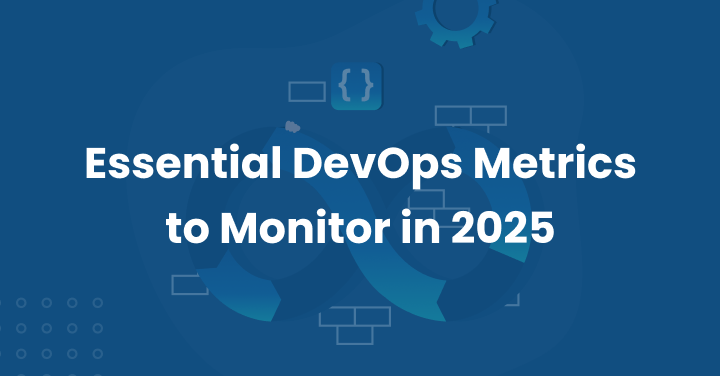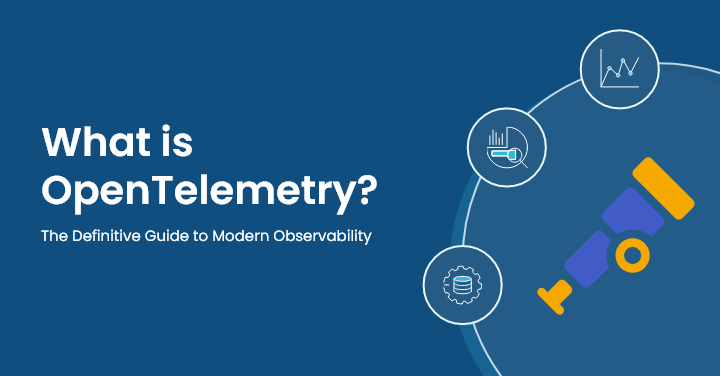Defending Against Advanced Persistent Threats (APTs)
Cyber threats are a major concern. Individuals, governments, and businesses all feel the impact.
The emergence of advanced persistent threats is one of the most alarming forms of cyber espionage (APTs). These hacks are notable for their intricacy, tenacity, and broad penetration capabilities, whether they target a mobile or web application.
APTs can harm the target network, including heightened geopolitical tensions, data theft, and protracted service interruptions.
Suppose an organization handles sensitive customer data or uses online survey apps.
In that case, it needs to be aware of the growing trend of employing digital platforms and technologies to prevent any upcoming malicious activity.
The definition of Advanced Persistent Threats (APTs), their modes of operation, their entry points, the harm they do, and—most importantly—countermeasures are all covered in this article.
Understanding Advanced Persistent Threats
Sophisticated cyberattacks known as Advanced Persistent Threats (APTs) differ significantly from conventional attack techniques in both their goals and methods of operation.
APTs prioritize long-term infiltration over typical intrusions, that are frequently intended for immediate financial benefit.
These dangers are enduring, silent for protracted periods, and designed to either steal confidential data or interfere with vital systems and hamper especially security information.
APTs usually start with a reconnaissance phase in which attackers thoroughly examine their target.
One of the primary tactics employed in this phase is social engineering; spearphishing is the recommended method.
The act of sending incredibly targeted emails to individuals to deceive them into divulging personal information or clicking on dangerous links is known as spear phishing.
Once inside, APTs migrate laterally across computers, stealthily penetrate networks, and take root.
The objective is long-term espionage, theft of intellectual property, and perhaps sabotage rather than immediate harm.
To avoid detection by conventional security measures of malicious attachments, attackers also utilize sophisticated evasion tactics.
These apt attackers are intricate and multidimensional, frequently supported by individuals with substantial financial resources, such as nation-states or big cybercrime organizations.
The Impact of APTs
The results of successful APT attacks can be severe, especially if your business-specific goals have better customer experience in contention.
Not only do organizations suffer from the loss of intellectual property and sensitive information, but they also deal with long-term effects such as a dent in financial services.
These effects include damaged reputations, interrupted operations, and costly recovery processes.
The theft of sensitive data like trade secrets and customer details from the web servers can impact many areas including a sizable decrease in the outbound traffic.
Sometimes, APTs seek to control important systems through custom malware applications, which can cause issues in essential services.
The aim for financial gain also leads APT actors to target financial institutions heavily.
Mitigating Advanced Persistent Threats
Mitigating the risks posed by APTs requires a comprehensive, multi-layered approach to cybersecurity.
Organizations need to implement robust security practices in a long period of time and continuously monitor their networks for suspicious activity.
1. Strong Cyber Hygiene:
Maintaining proper cyber hygiene is the primary line of defense against Advanced Persistent Threats (APTs).
This entails applying multi-factor authentication, enforcing strong password regulations, and routinely patching and updating systems.
Additionally, implementing DMARC rules helps secure your email domain, preventing phishing and spoofing by ensuring only trusted senders can use your domain.
It is imperative to guarantee that staff members receive training on identifying spear phishing emails and other forms of social engineering.
2. Network Segmentation:
Limiting an APT’s ability to move laterally throughout the system and quickly identify the malicious software can be achieved by segmenting the network into smaller, more isolated sections.
Segmentation helps large and small companies by making it more difficult for attackers to access other key portions of the network. Even if they manage to compromise one part of it.
3. Regular Security Audits and Penetration Testing:
Regular security assessments and web application penetration testing can uncover vulnerabilities.
This allows businesses to address them before they become targets for attackers.
These assessments should include third-party vendors, especially when integrating tools such as online survey apps into the organizational workflow.
APTs can exploit vulnerabilities in third-party applications to infiltrate a company’s internal network.
4. Threat Intelligence and Monitoring:
Staying informed about emerging threats is key to preempting APT attacks and keeping confidential information safe from advanced persistent threats.
Utilizing advanced threat intelligence tools is the best way to help organizations understand current cyber trends and identify potential weaknesses.
This helps them to curb the cyber espionage operation.
Proactive monitoring allows for the early detection of unusual network activity, enabling a quicker response to potential threats.
5. Incident Response Plan:
Businesses must have a well-established incident response plan in place.
This plan should outline specific steps to be taken in the event of a breach.
And make sure that all key personnel are trained to respond effectively.
A quick, coordinated response can help minimize the damage caused by an APT attack.
6. Advanced Security Technologies:
Adopting cybersecurity tools, such as MDM solutions for Android (Mobile Device Management), gives a competitive advantage.
It ensures that mobile devices accessing the network are secure.
These technologies give businesses command over mobile endpoints, facilitating remote device management and security.
By doing this, companies can stop APTs from gaining access to the wider system through a compromised process
APTs and Industry-Specific Threats
The vulnerability of organizations to APTs often varies by industry.
For example, the healthcare sector is a prime target due to the wealth of personal and medical data stored in its systems.
An APT attack on a healthcare provider could expose sensitive patient information, even their financial data, disrupt treatment schedules, and even endanger lives.
Similarly, government agencies are high-value targets, as they hold critical intelligence and infrastructure details.
APTs also have a unique impact on industries using tools like online survey platforms.
Consider an organization that leverages an online survey app to gather customer data.
If an APT gains access to this app, they could harvest personal information at scale.
Likewise, NPS surveys and other customer feedback tools are ripe for exploitation, especially when they integrate with internal systems that store sensitive client data.
In retail and finance, the adoption of high tech tools such as Android MDM adds another layer of security, as mobile devices often act as points of access to sensitive systems.
By securing these devices, companies can reduce their exposure to attacks stemming from compromised endpoints and maintain the administrator rights in order. In light of these growing challenges, many businesses are turning to dedicated security solutions that offer comprehensive protection against cyber threats like APTs. These platforms integrate various technologies, such as endpoint management and network visibility, to deliver a more proactive defense posture.
Conclusion
Advanced Persistent Threats (APTs) are among the most advanced and deadly kinds of cyberattacks during digital transformation.
These threats are distinguished by their capacity to cause long-term harm, stealth, and persistence.
A successful APT strike can have disastrous effects, regardless of the target—a company, a government agency, or a vital piece of infrastructure.
Organizations need to implement a comprehensive security plan that combines sophisticated security tools, frequent monitoring, and robust cyber hygiene to counteract advanced persistent threats (APTs).
Businesses that use digital platforms, like those running Android MDM systems must use online survey apps and need to be extra careful to safeguard their networks.
Businesses must strengthen their defenses against the ever-evolving threat of advanced persistent threats (APTs).
They can do this by cultivating a culture of cybersecurity awareness, undertaking regular security audits, and remaining educated.
FAQs:
An advanced persistent threat is different from regular cyber threats. While many cyber threats aim for quick benefits, this type of threat tries to keep unauthorized access to a targeted network for a long period. Their goal is to steal data and stay hidden, which makes them more dangerous.
To protect critical infrastructure, organizations need to focus on strong security measures, ensure good network security, and create a solid incident response plan. It’s very important to regularly update systems and make sure any secure location in the network is safe.
Intelligence sharing is very important in fighting against APTs. When the private sector, cybersecurity professionals, and governments share information about threats, tactics, and warning signs, they can work together. This cooperation helps to boost national security and strengthen defenses.







